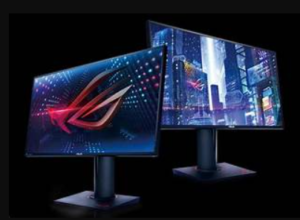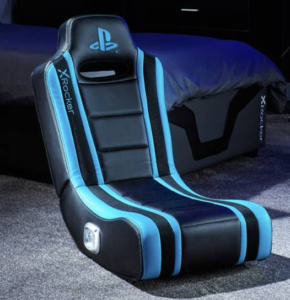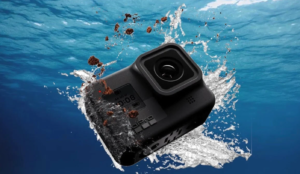Introduction:
The tools we use to interact with virtual landscapes have changed dramatically in the ever-changing world of gaming. From the simple joysticks of arcade machines to the sophisticated motion sensors of modern gaming, the evolution of gaming remotes demonstrates the gaming industry’s constant innovation. This multi-decade journey illustrates not simply technology advancement, but also the shifting dynamics of how we play and enjoy games. Join us on an enthralling journey through “The Evolution of Gaming Remotes: From Joysticks to Motion Sensors,” diving into the fascinating history and critical developments that have influenced the very essence of interactive entertainment.
History:
The journey of gaming remotes traces back to the early days of video gaming when simplicity ruled the roost. In the late 1970s, the Magnavox Odyssey, the first commercial home video game console, featured a basic paddle controller. As the gaming industry burgeoned, iconic controllers like the Atari 2600 joystick and the Nintendo Entertainment System (NES) controller emerged, setting the foundation for the modern gaming remote.
The 1990s witnessed a pivotal shift with the advent of three-dimensional gaming environments. Sony’s introduction of the Dual Shock controller for the PlayStation marked a breakthrough, incorporating dual analog sticks and force-feedback vibration. Microsoft’s Xbox controllers, with their ergonomic design and innovative triggers, further refined the gaming remote landscape.
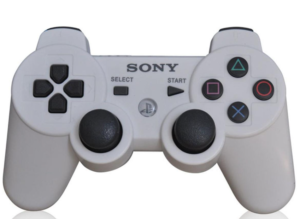
Wireless technology was introduced in the twenty-first century, giving players additional flexibility of movement. With its motion-sensing Wii Remote, the Nintendo Wii pioneered new pathways for interactive and family-friendly gaming. With the advancement of technology, the rise of virtual reality (VR) offered motion controllers such as the HTC Vive controllers and Oculus Touch, allowing users to interact with virtual surroundings in unprecedented ways.
Uses:
1. Traditional Gaming:
Gaming remotes serve as the primary input devices for consoles like PlayStation, Xbox, and Nintendo Switch.
Their ergonomic designs and button layouts are optimized for seamless control in a variety of gaming genres.
2. PC Gaming:
Many gaming remotes are compatible with PCs, offering a versatile gaming solution.
They often come with customizable buttons and configurations, catering to the preferences of PC gamers.
3. Motion Gaming:
Motion-sensing remotes, such as the Nintendo Wii Remote or PlayStation Move controllers, allow players to engage with games physically.
These controllers enhance immersion and are great for sports, fitness, and party games.
4. Virtual Reality (VR):
VR gaming remotes, such as the Oculus Touch controllers, are designed to mirror hand movements in virtual space.
They enhance the sense of presence and enable users to manipulate objects within VR environments.
5. Accessibility:
Gaming remotes often feature accessibility options, including programmable buttons and adaptive designs, making gaming more inclusive for individuals with disabilities.

FAQs:
1. Are gaming remotes compatible across different platforms?
While some gaming remotes are platform-specific, others, especially those designed for PC gaming, offer cross-platform compatibility. Always check the product specifications for compatibility information.
2. What is the advantage of wireless gaming remotes over wired ones?
Wireless gaming remotes provide greater freedom of movement, eliminating the constraints of cables. However, wired remotes may offer lower latency, making them preferable for competitive gaming.
3. Do gaming remotes work with virtual reality systems?
Yes, there are gaming remotes specifically designed for virtual reality systems, such as the Oculus Touch controllers. These controllers enhance the immersive experience in VR environments.
4. How do motion-sensing gaming remotes work?
Speedometers and motion sensors are used in motion-sensing gaming remotes to detect movement. They combine physical motions into in-game activities, making gaming more engaging and fluid.
5. Can gaming remotes be customized for accessibility?
Many gaming remotes come with customization options, including programmable buttons and adjustable settings, to accommodate users with different accessibility needs.
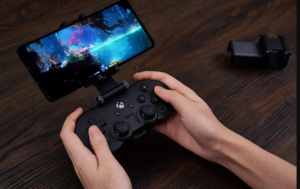
Different gaming remote:
Traditional Console Controllers:
- Xbox Controllers (e.g., Xbox One, Xbox Series X/S): Ergonomic design, textured grips, responsive buttons.
- PlayStation Controllers (e.g., Dual Shock, Dual Sense): Iconic designs, motion sensors, adaptive trigger technology.
- Nintendo Switch Joy-Cons: Versatile, usable individually or attached, motion controls, HD Rumble.
PC Gaming Controllers:
- Xbox Elite Wireless Controller: Premium controller for PC, customizable buttons, swappable components.
- Logitech Gamepads (e.g., F310, F710): Designed for PC gaming, comfortable grip, customizable inputs.
Mobile Gaming Controllers:
- Razer Kishi: Attaches to smartphones, transforms into a gaming device, console-like controls.
- Steel Series Stratus Duo: Wireless mobile controller, Bluetooth connectivity, suitable for smartphones and tablets.
Motion-Sensing Controllers:
- Nintendo Wii Remote: Pioneering motion controls, physical interaction with games.
- PlayStation Move Controllers: Enhances VR experience, motion controls for PlayStation VR.
Arcade Sticks:
- Hori Real Arcade Pro: Popular among fighting game enthusiasts, replicates arcade machine feel.
- Mad Catz Tournament Edition Fight Stick: Customizable components, favored by professional fighting game players.
Steering Wheels and Racing Wheels:
- Logitech G29/G920: Realistic racing experience, force feedback technology.
- Thrust master T300 RS: Force feedback, enhances immersion in racing simulation games.
Flight Sticks:
- Logitech Flight Stick: Precise control for flight simulation enthusiasts.
- Thrust master T.16000M FCS Flight Stick: Precision and durability for flight simulation games.
Adaptive Controllers:
- Xbox Adaptive Controller: Accessibility-focused, large programmable buttons, jacks for external switches.
- Quad Stick: Mouth-controlled adaptive controller, alternative input method for individuals with limited mobility.
These diverse gaming remotes cover a wide range of gaming styles, platforms, and accessibility needs, contributing to the inclusivity and versatility of the gaming industry.

Conclusion:
In summary, the evolution of gaming remotes, from joysticks to motion sensors, is a captivating journey showcasing the dynamic advancements in the industry. Traditional console controllers, PC peripherals, and specialized devices have transformed to offer diverse and inclusive gaming experiences. The introduction of motion-sensing technology has not only expanded interaction possibilities but has also ushered in a new era of immersion, especially in virtual reality.
Looking ahead, the trajectory suggests ongoing innovation, promising advancements in haptic feedback, AI integration, and more. highlights not just technological progress but the integral role remotes play in shaping the gaming experience. As we anticipate future developments, it’s clear that remotes will continue to lead the way in enhancing player interaction and immersion in the digital worlds of tomorrow.





